HNUE JOURNAL OF SCIENCE Educational Sciences 2024, Volume 69, Issue 4, pp. 24-34 This paper is available online at https://hnuejs.edu.vn DOI: 10.18173/2354-1075.2024-0160
THE REPRESENTATION OF CRITICAL THINKING IN THE TEXTBOOK SUPER MINDS LEVEL 3 Nguyen Phuong An1 and Duong My Tham2* 1Faculty of English Language, HUTECH University, Ho Chi Minh city, Vietnam 2Faculty of English, Ho Chi Minh City University of Economics and Finance, Ho Chi Minh city, Vietnam *Corresponding author Duong My Tham, e-mail: thamdm@uef.edu.vn Received June 14, 2024. Revised September 19, 2024. Accepted September 30, 2024.
Abstract. This study aims to examine the extent to which critical thinking (CT) is represented in the English textbook Super Minds Level 3 which has been used to teach English to the elementary level. The textbook analysis is based on two frameworks including the analytic categories of CT and the material evaluation checklists. More specifically, the CT framework Consists of categories such as clarification, perspective, prediction, reason and evidence, summary, and conclusion. Besides, the textbook was analyzed regarding aim and approaches, design and organization, language content, skills, and learners’ needs. The descriptive content analysis reveals that the language skills tasks in the textbook primarily emphasize reasoning and evidence, along with clarification, perspective, and prediction, while summary and conclusion are less represented. Additionally, the material evaluation checklists, covering aspects like aims and approaches, design and organization, language content, and learners' needs, provide supplementary insights into the CT characteristics of the textbook, though these aspects are discussed more briefly in descriptive details and mainly serve as a foundation in this study. Overall, the selected CT categories are found to be well-represented through the textbook evaluation, particularly in the language skills tasks, which significantly contribute to fostering learners' critical thinking skills. Keywords: critical thinking, document analysis, material evaluation, textbook.
1. Introduction
The English language is important in connecting the world internationally [1]. Independent logical thinking and reasoning are two factors that contribute to effective communication. Thus, developing critical thinking (CT) abilities is essential when studying and communicating in English [2]. According to the studies that indicate CT can both facilitate language skill acquisition [3], [4] and improve general language proficiency [5], CT has become more common in language learning and teaching in the 21st century [6], [7]. In Vietnam, the 2018 General Education English Curriculum has been recently revised to enhance students' logical and abstract thinking abilities [8], [9]. The updated curriculum strongly emphasizes fostering critical thinking skills (CTS) such as problem-solving, analysis, and evaluation. In education focusing on English Language Teaching, CT is viewed as a vital skill highly valued in the recent world [10]. To obtain CT, learning materials must include CT elements [11]. As a result, the inclusion of CT training aspects in learning materials is fundamental [12]. CT is now part of the educational discourse in several
24
The representation of critical thinking in the textbook Super Minds Level 3
countries, mostly appearing in teaching practices/ programs or implied in English teaching and language learning techniques, it is even included in English textbooks; especially integrated into language skills provided through tasks or practices in English students’ books or workbooks. The Super Minds series has been widely utilized in numerous language centers, as its increased inclusion of CT elements enhances learners' language skills. This English textbook series promotes CTS to improve students’ understanding of English learning [13], thereby creating the foundation for learners’ further capacities. This study examines the extent to which CT is integrated into the English textbook Super Minds Level 3, to identify the presence of CT elements within this educational resource.
● To what extent is CT represented in the textbook Super Minds Level 3? Several international researchers have shown interest in CTS and have identified various components of CT [14], [15], [16]. However, when it comes to evaluating textbooks concerning CT, most studies focus solely on examining CT in tasks or questions, neglecting other important aspects such as language content, design, organization, or learners’ needs through the textbooks, which also plays an important role in contributing to delivering CT effectively. While the number of studies examining CT through textbooks has been increasing, studies that specifically examine CT in English textbooks or coursebooks in Vietnam are relatively limited [17], [18].
2. Content
2.1. Literature review
Various interpretations of CT have been discussed in the literature. Initially, it was seen as an educational goal and was often referred to as “reflective thinking” [19]. CT is also defined as “reasonable reflective thinking focused on deciding what to believe or do.” [20] (p.180). In recent years, CT has become increasingly important in educational settings [21]. The focus of education has shifted from teaching specific content areas to teaching students how to think critically [22]. More specifically, CT encompasses a wide range of cognitive abilities [19], [20] (e.g. analysis, evaluation, inference, and reflective judgment) and intellectual dispositions (e.g., open- mindedness, curiosity, organized thinking, and adaptability) that are essential for recognizing, analyzing, and evaluating arguments [21], [22]. Ultimately, CT also enables the construction and presentation of compelling arguments and the arrival of reasonable and intelligent conclusions regarding beliefs and actions [23]. Specifically, CT significantly influenced language skills (including listening, reading, speaking, and writing skills) [24]. As stated alternatively, CT is a wide range of skills and characteristics that support and describe lifelong learning, particularly English language learning and teaching.
The examined Textbooks represent one of the numerous methods of language acquisition, utilizing tools and materials that incorporate CT, which have developed alongside the trend of integrating CT into education [11]. Textbooks can act as a reservoir of ideas, offering practical teaching illustrations and inspiring educators to unleash their creative potential [26]. The integration of CT in English Language Teaching (ELT) has been proven to be viable, and future endeavors in non-Western countries could concentrate on improving ELT resources that enhance both English language proficiency and CTS simultaneously. Different popular taxonomies, frameworks, and models of CT elements applied to previous research concerning CT in education such as Bloom's Taxonomy [15], [16], Paul-Elder model [24], and Ilyas' CT framework [14], [27] mostly focus on CT elements in teaching and learning approaches, materials, and perceptions. It was discovered that teachers and students believed that practicing CTS came from reviewing journal articles, having debates, producing research papers, assessing case studies, and having discussions about questions [25]. Understandably, all of these practices can be found within the materials they employ, specifically in English textbooks.
25
Nguyen PA & Duong MT*
The representation of CT elements in English textbooks is primarily evident through exercises designed to enhance language skills. These interactive tasks, such as problem-solving and decision-making, facilitate deeper cognitive engagement and foster an appreciation for diverse perspectives among students. Additionally, the logical design and structured organization of the material, along with clear aims and approaches, optimize CT development through tasks and exercises, thereby encouraging broader applications of CT skills to improve language proficiency. By integrating CT into the learning process, particularly within language skills, textbooks enable learners to view language as a tool for deeper analysis and expression, ultimately promoting both critical thinking and the real-world application of knowledge.
In previous studies, the investigation of CT within classroom settings has gained significant prevalence [2]. In the international context, Solihati and Hikmat [14] composed a paper to assess how much CT is present in the Indonesian language textbooks that senior high school students use. The study's conclusions might persuade textbook authors to add more exercises that foster CT. In a another study, Baig et al. [15] evaluated a Grade 8 English textbook's effectiveness in enhancing reading and thinking skills and assessed Grade 8 students' satisfaction with the book . The findings showed that the textbook significantly satisfied the aspects of CTS applying in the ‘Reading and Thinking Skills’ sections. Using Bloom's taxonomy, Es-Salhi, and Effatihi's [16] study sought to assess CTS in Moroccan English through analyzing the EFL textbook Gateway to English 2 (GTE2). According to the study's findings, while Morocco's educational policy aims to develop CTS, their current textbooks mainly focus on lower-order skills like comprehension and application, overlooking higher-order skills vital for academic and professional success. It suggests adding activities and resources to enhance CT.
In the context of Vietnam, in a paper by Nguyen [17], which is a component of a wider qualitative study on the application of CT in a Vietnamese EFL environment, the results of an investigation into the interpretation of CT by Vietnamese EFL professors and students at a university are presented. Another research study by Le [18] critically investigated the moral principles incorporated in Vietnamese locally-composed EFL textbooks for upper secondary school students. This chapter found that while the textbooks included Vietnamese and universal moral values, the learning activities fell short in promoting student engagement in language practice and applying statistical data for CT and problem-solving. As a result, the Vietnamese teaching culture shaped the understanding and application of CT in English as EFL for both teachers and students in the study.
Research both globally and in Vietnam highlights the importance of CT in education, especially in English language teaching. However, CT's integration in English textbooks, like Super Minds Level 3, has not been thoroughly explored in the Vietnamese context. Previous evaluations of CT in textbooks often overlooked key factors such as organization, language content, design, and learners' needs. This study aims to fill that gap by analyzing CT elements in Super Minds Level 3 within a Vietnamese language education center context.
2.2 Methodologies
2.2.1 Textbook evaluation
This study employed a mixed method, particularly descriptive qualitative combined with quantitative. This study used descriptive-evaluative content analysis to analyze the Super Minds level 3 textbook and examine the extent to which CT is represented. Super Minds Level 3 is one of seven books in the series of Super Minds published by Cambridge University Press [13]. The Super Minds Level 3 textbook is specifically designed for young learners at the elementary level (Pre-A1/Beginner), targeting children aged 8 to 11 years. Comprising 127 pages, the textbook includes a preliminary section titled “Meet the Explorers” (6 pages), followed by nine main units presented in a user-friendly single-page lesson format, and concludes with a revision section (12
26
The representation of critical thinking in the textbook Super Minds Level 3
pages for each unit). The primary objectives of this English textbook are to develop students' foundational critical thinking (CT) and creative problem-solving skills while fostering a communicative classroom environment through language skills practice. Additionally, the textbook incorporates CT exercises that emphasize fundamental CT, clear delivery, and practical tasks across reading, listening, speaking, and writing activities. The content of the English textbook was analyzed using content analysis methods focusing
on CT elements. Five selected CT components—classification, perspective, prediction, reasoning and evidence, and summarization and conclusion—were evaluated concerning the textbook's criteria such as aims and approaches, design and organization, language content, language skills, and learners’ needs. Additionally, the analysis examined how the authors constructed questions, tasks, and activities related to CT. In this study, Ilyas’s [27] framework of CT and Cunningsworth’s [29] textbook evaluation checklist were combined to advance the textbook analysis. The textbook evaluation checklist created by Cunningsworth [29] was considered suitable for assessing this specific textbook because it thoroughly evaluates five specific criteria throughout the stages of in-use and post-use. The amalgamation of these two frameworks facilitates a thorough examination of the textbook by incorporating advanced CT elements to enhance language skills promoted in the textbook. Since Ilyas's analytic categories encompass a combination of various CT techniques and taxonomies [27], the researchers found that it was more advanced than other frameworks for analyzing CT. These categories identify common themes among the 21 CT theories, which include two CT taxonomies (Freeman and Bloom), six empirical studies on CT in English language teaching from different researchers, nine CT programs developed by CT authorities, as well as CT tests [14]. These selected sources were deemed more robust and were utilized in the study.
The integration of these two frameworks enables a comprehensive exploration of CT and a focused assessment of key factors and textbook materials, ensuring content and construct validity. They encompass essential elements such as objectives, methodologies, structure, language content, competencies, and learner needs, addressing all aspects of CT. This approach also allows for statistical analysis of CT through combined tasks in four language skills, providing empirical data to support the research's construct validity. In addition, both authors Cunningsworth and Ilyas [27], [28] shared a common perspective on the importance of CTS, one highlighted that it could be a source of inspiration and ideas for language creative activities in the classroom [28] (p.139) while the other acknowledged that integrating CTS into the textbook could aid in developing learners' CTS and achieving educational objectives [27] (p.44). Furthermore, the creators of Super Mind Level 3 have indicated that this textbook effectively incorporates CT elements throughout its design and content [13]. To ensure that the textbook fulfills its intended objectives, a comprehensive assessment is essential. The combined framework effectively addresses previous gaps in textbook evaluations by incorporating a thorough analysis of CT aspects within language skills, distinguishing itself from earlier frameworks that inadequately addressed CT in their evaluations. In conclusion, the analysis of the Super Minds level 3 textbook allowed for the determination of whether the CT objectives were successfully met. The assessment also aimed to establish the validity and rationale behind the implementation of CT in specific tasks and activities. This evaluation was conducted using a detailed textbook evaluation checklist, further differentiating this study from previous research. 2.2.2 Data collection and analysis procedures
The data from the textbook analysis was analyzed using the two frameworks mentioned earlier [27], [28]. The focus was on content analysis, where the text-based questions in the textbook were processed by examining the elements presented through the material analysis. In this context, the term 'questions' also encompassed tasks. Data collection was conducted by teachers experienced in using the textbook for English instruction at the language center. The data
27
Nguyen PA & Duong MT*
were manually analyzed through examination and evaluation of exercises that met language skills requirements and incorporated CT elements.
To analyze the tasks/questions, Ilyas’s CT framework [27] was utilized. The analytic categories within this framework were derived from the CT framework developed by Ilyas [27] and the material evaluation checklists provided by Cunningsworth [28]. The qualitative data obtained from the text-based questions in the textbook elucidated its strengths and weaknesses concerning content and CT categories. This research data was derived from descriptions based on the textbook's layout, tasks, and activities/questions. Selected sample activities, tasks, and questions served as supporting evidence to assess the textbook's alignment with evaluation criteria established by Cunningsworth's checklists [28]. Besides, the frequencies and percentages of questions falling into the specified categories make up the quantitative data. In particular, the content of the textbook was effectively analyzed by presenting the frequencies and percentages of tasks/questions related to language skills and CT categories. During the analysis stage, the data is utilized to bolster the discussion of the research issue. It particularly displays the overview of CT, accompanied by a thorough checklist description. After collecting, analyzing, and presenting the data, the researcher was able to draw conclusive findings from the research outcomes.
2.3 Results and Discussion
2.3.1 Results
Based on the criteria of a good textbook by Cunningsworth [28], the researchers include 1) Aim and Approaches, 2) Design and Organization, 3) Language Content, 4) Skills, 5) Learners’ needs in the research findings below. Besides, Ilyas’s [27] framework of CT was used in this study for the textbook evaluation to identify the CT elements related to the English language skills in this material concerning the following specific aspects: a) Classification, b) Perspective, c) Prediction, d) Reason and evidence, e) Summary and Conclusion. 2.3.1.1 Aims and approaches The Super Minds Level 3 textbook is tailored to meet the needs of English learners and align
with the English language learning objectives. It integrates CT elements through its structured aims and strategies, addressing both language acquisition and global topics like saving water and natural science. The textbook promotes vocabulary development, autonomy, reasoning, and questioning through speaking exercises and predictions before activities, enhancing learners' ability to express thoughts on various subjects. Designed for elementary-level students (Movers/CEFR Level A1), it gradually introduces simple to complex concepts, supporting logical thinking and proficiency in English. It incorporates real-life scenarios and authentic materials to foster communication and flexibility in teaching methods. Additionally, the textbook focuses on building confidence, language proficiency, and CTS, while also allowing comprehensive evaluation of learner competencies through varied testing formats. 2.3.1.2 Design and Organization
The textbook effectively complements the course package by integrating essential components with a clear, logical structure that progresses from simple to complex topics. This design particularly suits EFL learners in Vietnam. The layout promotes individual practice and provides reliable grammar references, aiding skill development. The textbook's incorporation of CT is evident through its systematic organization, with sections like Learn and Think and Find Out guiding learners through increasingly complex tasks. This logical sequence fosters learners’ recognition and enhances English acquisition. Published by Cambridge University Press, the series includes comprehensive resources such as a teacher’s book, student’s book, workbook, grammar practice book, and CD-ROM. While the workbook and grammar book fell short of expectations, their merger into Practice Book SM.3 improves the integration of vocabulary and
28
The representation of critical thinking in the textbook Super Minds Level 3
grammar tasks. Overall, the textbook’s user-friendly design supports both learners and teachers in the English learning process. 2.3.1.3 Language content
The textbook provides comprehensive coverage of fundamental grammar concepts appropriate to elementary-level learners, effectively addressing their language learning needs. Key CT components, such as perspective, prediction, reasoning, and evidence, are integrated to enhance communication skills, particularly in speaking. Learners are encouraged to articulate their thoughts through questions like “Why” or “Which,” and to support their responses with details, examples, or clarifications, promoting deeper idea development. Vocabulary instruction is extensive, focusing on scientific and biological themes, and includes strategies for individual lexical development. Pronunciation exercises target accurate sound recognition and articulation. The textbook also covers language use beyond the sentence level, engaging learners in narrative composition, text comprehension, and topic-based conversations. Learners respond to various question types, such as Wh-questions and yes/no inquiries, supported by reasoning and evidence. The language style reflects global social contexts, making it suitable for learners at the CEFR elementary level. Grammatical exercises are well-aligned with learners’ proficiency, covering sentence structures for describing past, present, and future events, expressing thoughts and feelings, making comparisons, and organizing stories. Vocabulary and topics are appropriately selected, progressing from basic to more complex scenarios, and directly relate to real-world situations. The structured activities and assignments are streamlined to focus on learners' objectives, with explanations tailored to their English proficiency level. 2.3.1.4. Language skills
The textbook effectively addresses all four language skills in alignment with the syllabus requirements. Integrated tasks and questions offer combined activities, with reading passages appropriate for the learners' level. These passages include moral lessons related to unit topics and promote critical discussion and deeper interpretation. Listening materials are well-recorded, authentic, and supplemented with background information, questions, and activities that incorporate CT elements such as prediction and classification. Spoken English materials, including dialogues and role plays, are designed to prepare learners for real-life interactions and encourage them to express opinions, reason, and provide evidence. Although writing activities are less emphasized, clear guidance ensures accuracy while inspiring learners to engage in tasks like summarizing, drawing conclusions, and creative writing. The organization of longer writing pieces is introduced in later units, gradually increasing the difficulty and preparing learners for appropriate writing styles at the elementary level.
The Super Minds level 3 textbook focused on improving speaking, listening, and reading skills, but did not adequately cover writing. It emphasized the importance of mastering communication abilities rather than interpreting their ideas through writing. The frequency of tasks in the Super Minds level 3 textbook was determined by experienced teachers. Task frequency was analyzed based on requests, task designs, repetition, and types. The data revealed that writing skills were insufficiently addressed (17.45%) while speaking (30.03%), listening (29.4%), and reading (22.94%) received more focus. Despite the variation in the number of exercises, the quality remained high, though skill integration was somewhat unbalanced. The textbook effectively supports integrated skills, particularly between listening and speaking, and reading and writing.
Approximately one-third of tasks across all skills incorporated CT elements, with thinking skills making up 22.94% of the tasks. Particularly, their inclusion demonstrates the presence of CT elements, particularly in sections labeled Think. The application of these skills depends on factors such as teacher guidance and learner receptiveness. CT tasks often involve classification, problem-solving, and explanations of scientific processes, and they are simplified to suit
29
Nguyen PA & Duong MT*
elementary learners. The inclusion of CT tasks in sections like Found out, Learn and Think highlights their role in enhancing learners’ CTS. Since government documents do not specify the percentage or form of CT elements required in textbooks, it is reasonable to conclude that the activities designed to promote CT are appropriately employed based on the data collected.
Table 1. The frequency and percentage of the representation of CT elements through tasks/ questions in the textbook Super Minds Level 3
Frequency Percentage Categories
1. Classification 14 4.53
2. Perspective 13 4.2
3. Prediction 13 4.2
4. Reason and evidence 23 7.44
5. Summary and conclusion 8 2.58
Total 71 22.94
Table 1 shows an uneven distribution of individual CT elements, indicating their minimal impact on the overall task count, with each category comprising less than 10% of the total. Being present in most textbook tasks and questions, these CT elements are important for enhancing learners' critical thinking skills while practicing language skills, ultimately improving English Language Teaching and learners' proficiency.
a) Classification Classification plays a crucial role in developing learners' reading and speaking skills by helping them analyze and distinguish elements, categorize words and phrases, and explain objects' functions through organized vocabulary and self-expression. This process fosters CTS by encouraging logical thought and clear communication in language exercises. The primary emphasis of classification in the textbook is on speaking (2.58%) and reading (1.3%) skills, reflecting its importance in enhancing communication. Although classification tasks represent only 4.53% of the total language skills activities, they significantly strengthen language abilities. These tasks assist learners in identifying parts of speech, sentence types, and lexical categories, reinforcing foundational skills and boosting CT for improved language proficiency [13]. Moreover, classification tasks enhance learners' observational, comparative, and articulation abilities, promoting self-directed learning, curiosity, and creativity in language acquisition [29].
b) Perspective Perspective played a critical role in enhancing learners' abilities to ask questions, devise quizzes, and conduct questionnaires, particularly in the C omics section at the end of each unit. These activities encouraged learners' CTS by helping them evaluate contexts, investigate key points, and generate appropriate questions and answers. Perspective was particularly integrated into comprehension tasks, prompting learners to express ideas after reading or create quizzes based on given answers, raising awareness of scientific topics in the Learn and Think section [13]. Perspective was present in 4.2% of the total language tasks, with individual language skills ranging from 0.97% to 1.3%. This is significant, as it features prominently in Movers-level speaking and writing assessments [29]. Incorporating perspective into tasks enhances language learning by making activities more engaging and meaningful, especially when real-world scenarios reflecting learners' diverse backgrounds are used. This not only aids language skill development but also fosters social skills and cultural awareness [13]. Furthermore, perspective supports the development of questioning - a crucial yet often overlooked skill in language
30
The representation of critical thinking in the textbook Super Minds Level 3
acquisition. By improving learners' ability to ask questions and express opinions, perspective fosters greater confidence and engagement in the English learning process.
c) Prediction Prediction plays a vital role in motivating learners’ participation in listening and reading CTS. It encourages learners to evaluate elements of a topic and propose opinions based on their predictions. This skill was primarily developed in tasks such as predicting story outcomes, evaluating scenarios, and expressing opinions about reading and listening contexts. Additionally, prediction tasks enhanced numerical awareness and problem-solving skills through activities related to math and history [13]. Prediction was most prominent in reading (1.61%) and listening (1.61%) tasks, with some presence in speaking (0.97%), accounting for 4.2% of the overall language tasks. In reading and listening, prediction helped learners activate background knowledge before skimming or focused listening [13]. In speaking, prediction was incorporated into group activities, such as presenting findings from the Find Out section. This skill is essential for enhancing communication, reading, and listening comprehension by allowing learners to anticipate content, themes, and outcomes, keeping them engaged and focused. Overall, prediction improves learners’ ability to process language, anticipate content, and develop learning strategies. It enhances communication by promoting interactive exchanges and fosters effective use of CTS and CT elements in the classroom. d) Reasoning and evidence The interconnectedness of reasoning and evidence is prominently featured in various tasks and questions throughout the textbook, providing educators with opportunities to integrate CT elements into classroom activities. Certain questions prompted students to articulate reasoning and evidence by addressing inquiries beginning with “Why?” This approach involved responding to questions related to the comics presented at the end of each unit, allowing students to discern information and make inferences through logical reasoning supported by the evidence within the comics [13]. Additionally, students were encouraged to enhance their knowledge by synthesizing information, analyzing content related to scientific topics, and selecting relevant data to deepen their understanding. The integration of reasoning and evidence is evident in language skills tasks, which make up 7.44% of the total assessment. Writing skills, representing 2.9%, emphasize the importance of clear expression. Reading skills, at 1.94%, highlight the need for text analysis in evaluating evidence, while speaking skills, comprising 1.61%, underscore the significance of verbal communication in discussions. Listening skills, representing 0.97%, further illustrate the significance of interpreting auditory information [29]. Language skill development is heavily influenced by reasoning and evidence [27]; effective articulation of thoughts is rooted in logical reasoning, facilitating coherent argument structure and viewpoint expression. This process not only enhances vocabulary and grammar but also fosters CT. Engagement in debates and research projects requiring sound reasoning and credible evidence further builds language proficiency, equipping learners for real-world communication.
e) Summary and conclusion The elements of summary and conclusion are crucial for language learners, significantly enhancing their critical thinking skills. Although these components constitute a small portion of the textbook, they necessitate the application of skills such as classification, perspective, reasoning, and evidence. Activities in the “Find Out” section emphasize the importance of summarizing and concluding by encouraging learners to present findings from various data collection methods, such as charts and surveys. These assignments facilitate understanding by enabling learners to distill key points and synthesize lengthy texts into concise summaries. Despite their limited presence, accounting for only 2.58% of the total CT elements in language skills tasks, the summary and conclusion components have a notable impact on reading and writing proficiency. The reading section comprises 1.94%, while the writing section contributes
31
Nguyen PA & Duong MT*
0.65%. Although these percentages seem minimal, the processes of summarizing and concluding are vital for effective language learning. They enable learners to break down complex information, enhancing comprehension and retention by identifying main ideas and key points. Furthermore, summarizing fosters active engagement with the language, reinforcing vocabulary and grammar skills as learners process information [27]. This active involvement is crucial for language acquisition, as it facilitates sentence construction and contextual use of new vocabulary.
2.3.1.5 Learners’ needs
The Super Minds Level 3 textbook effectively identifies and addresses learner needs, providing relevant lessons that enhance English language development in alignment with students' daily experiences. By integrating CT elements, the textbook plays a vital role in improving learners' communication skills and overall language competencies. It encourages the independent development of essential skills such as decision-making and problem-solving, fostering an environment that promotes creativity and exploration [27]. The inclusion of CT traits—such as classification, prediction, perspective-taking, reasoning, evidence evaluation, summarization, and conclusion drawing - offers opportunities for learners and teachers to engage in discussions on a range of topics. This integration not only boosts learners' confidence in articulating their ideas but also enhances their ability to logically evaluate and prioritize information in both spoken and written tasks [29]. Ultimately, the application of CT elements facilitates coherent communication and helps learners achieve their language learning goals, including academic success and high performance in CEFR assessments at their desired proficiency levels.
2.3.2 Discussion
At the end of the data collection and analysis, it was found that four out of the five aspects outlined by Cunningsworth [28] were addressed comprehensively. Moreover, these five aspects revealed the manifestation of CT characteristics within them. The organization and structure of the Super Minds Level 3 textbook align well with learners’ proficiency levels, effectively promoting language skills alongside the CT elements to enhance communicative skills and CTS. The tasks, language styles, vocabulary, and pronunciation are logically arranged, fostering motivation and engagement in the teaching and learning process. The textbook's physical presentation, featuring real-life images, comics, and colorful illustrations, creates a friendly atmosphere that captivates learners. Additional features such as songs, charts, and handmade scrapbooks stimulate creativity, imagination, and logical reasoning while further developing language skills.
This textbook incorporates CT components primarily within the language skills, using Ilyas’ CT framework [27] to select and present criteria and proficiencies impartially. Previous research has generally assigned low ratings to integrated curriculum elements, noting that the promotion of CT skills is often minimal (particularly, their data collected were lower than 2%) [14], [15], [16]. In contrast, this study systematically analyzes CT engagement in the Super Minds Level 3 textbook, demonstrating a higher frequency of CT elements compared to other resources (about 23% throughout the textbook). The analysis utilized both Cunningsworth's checklist [28] and Ilyas' CT framework [27], allowing for a comprehensive evaluation of the textbook’s content beyond mere tasks. The findings of this study are significant for evaluating English textbooks that integrate CT elements to develop language skills, particularly in the Vietnamese educational context, which emphasizes the modernization of educational resources. This study highlights the importance of CT in fostering adaptability and flexibility in English use across various contexts. Despite the limited research in the EFL context, particularly in language centers, this study provides valuable insights into the assessment of English textbooks authored by Vietnamese writers, an area that has been largely overlooked. Future research could benefit from exploring
32
The representation of critical thinking in the textbook Super Minds Level 3
the perspectives of both teachers and students or assessing the impact of CT integration through experimental methodologies in English teaching materials.
3. Conclusions
In conclusion, the textbook successfully integrates CT elements, significantly enhancing learners' English proficiency and overall cognitive development. Through stimulating content, questions, and opportunities for analysis, it promotes CT, problem-solving, and communication skills. These components provide learners with valuable tools to improve their language abilities while nurturing essential transferable skills important for academic success.
However, the full potential of the textbook may be limited by the teaching strategies and time constraints imposed on educators. The analysis confirmed that the CT categories used were effective in fostering an engaging and interactive learning environment. Despite this, further research is needed to incorporate more comprehensive data from teachers and learners who have used the textbook. This will help provide further insights into the textbook's effectiveness and allow for meaningful comparisons with other materials incorporating CT elements. By addressing these gaps, a more well-rounded evaluation of how CT enhances language learning can be achieved, offering valuable implications for future educational resources.
REFERENCES [1] Rao PS, (2019). The role of English as a global language. Research Journal of English, 4(1), 65-79.
[2] Feucht, F, (2023). Developing critical thinking in English language arts (ELA). LinkedIn. https://www.linkedin.com/pulse/developing-critical-thinking-english-language-arts-ela- feucht [3] Manalo E & Sheppard C, (2016). How might language affect critical thinking performance? Thinking Skills and Creativity, 21, 41-49.
[4] Wu WCV, Marek M & Chen NS, (2013). Assessing cultural awareness and linguistic competency of EFL learners in a CMC-based active learning context. System, 41(3), 515-528. [5] Liaw SS, (2008). Investigating students’ perceived satisfaction, behavioral intention, and effectiveness of e-learning: A case study of the Blackboard system. Computers & Education, 51(2), 864-873. [6] Li L, (2016). Thinking skills and creativity in second language education: Where are we now? Thinking Skills and Creativity, 22, 267-272
[7] Van Laar E, Van Deursen AJ, Van Dijk JA & De Haan, J, (2017). The relation between 21st- century skills and digital skills: A systematic literature review. Computers in Human Behavior, 72, 577-588.
[8] Ministry of Education and Training [MoET], (2018a). Total general education curriculum. [9] Ministry of Education and Training [MoET], (2018b). General education English curriculum.
[10] McPeck JE, (2016). Critical thinking and education. Routledge. [11] Agusta AR & Pratiwi, DA, (2020, December). Learning Material Development Containing Critical Thinking and Creative Thinking Skills Based on Local Wisdom. In 6th International Conference on Education and Technology (ICET 2020) (pp. 43-57). Atlantis Press.
[12] Setyowati RN, Sari MMK & Habibah SM, (2018, October). Improving critical thinking skills of students through the development of teaching materials. In 1st International Conference on Social Sciences (ICSS 2018) (pp. 240-245). Atlantis Press.
33
Nguyen PA & Duong MT*
[13] Puchta H, Gerngross G & Lewis P, (2012). Super Minds American English: Student’s Book. Cambridge: Cambridge University Press. [14] Solihati N & Hikmat A (2018). Critical thinking tasks manifested in Indonesian language textbooks for senior secondary students. Sage Open, 8(3).
[15] Baig S, Siddiquah A & Javed, F, (2021). An analysis of the competency ‘reading and thinking skills’ in Grade VIII English textbook. Global Social Sciences Review, 5(1), 231- 240. https://doi.org/10.31703/gssr.2020(V-I).24
[16] Es-Salhi A & Elfatihi M, (2019). Evaluating critical thinking skills in Moroccan EFL textbooks: Gateway to English 2 as a case. Higher Education of Social Science, 17(1), 13-22. [17] Nguyen TTB, (2022). Critical thinking: What it means in a Vietnamese tertiary EFL context. English as a Foreign Language International Journal, 2(3), 4-23.
[18] Le CV, (2018). A critical analysis of moral values in Vietnam-produced EFL textbooks for upper secondary schools. Situating Moral and Cultural Values in ELT Materials: The Southeast Asian Context, 111-129.
[19] Dewey J, (1910). How We Think. Continuity, 3(40), 80. [20] Ennis RH, (1993). Critical thinking assessment. Theory into Practice, 32(3), 179-186. [21] Fisher R, (2001). Philosophy in primary schools: fostering thinking skills and literacy. Reading, 35(2), 67-73.
[22] Lipman M, (2003). Thinking in education. Cambridge University Press. [23] Bassham G, Irwin W, Nardone H & Wallace JM, (2010). Critical thinking: A student’s introduction. McGraw-Hill. [24] Paul R, & Elder L, (2019). The miniature guide to critical thinking concepts and tools. Rowman & Littlefield.
[25] Salmon AK & Barrera MX, (2021). Intentional questioning promotes thinking and learning. Thinking Skills and Creativity, 40. DOI: https://doi.org/10.1016/j.tsc.2021.100822 [26] Alsaleh NJ, (2020). Teaching Critical Thinking Skills: Literature Review. Turkish Online Journal of Educational Technology-TOJET, 19(1), 21-39. [27] Ilyas H, (2015). Critical thinking: Its representation in Indonesian ELT textbooks and education (Doctoral dissertation, University of York).
[28] Cunningsworth A, (1995). Choosing your coursebook. Macmillan. [29] Wilson, JULIET (2007). Reviewing the Cambridge Young Learners English (YLE)
tests. Cambridge ESOL: Research Notes, 28, 2-4.
34

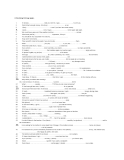
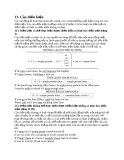
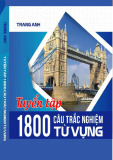
![Tài liệu Từ vựng tiếng Anh Trung cấp [mới nhất]](https://cdn.tailieu.vn/images/document/thumbnail/2025/20250913/nguyentuan250421@gmail.com/135x160/99491757910839.jpg)
![Tài liệu Từ vựng Tiếng Anh theo chủ đề [mới nhất]](https://cdn.tailieu.vn/images/document/thumbnail/2025/20250913/namdhuet@gmail.com/135x160/83251757753810.jpg)
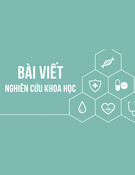
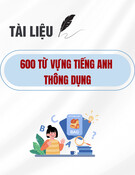
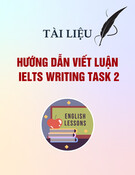
![Tài liệu Từ vựng tiếng Anh cho bé [chuẩn nhất/mới nhất]](https://cdn.tailieu.vn/images/document/thumbnail/2025/20250731/huadaithesang2509@gmail.com/135x160/18631754013896.jpg)








